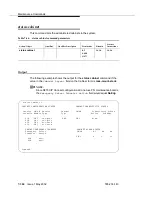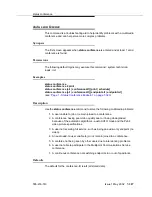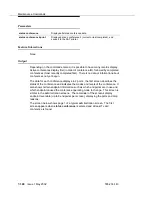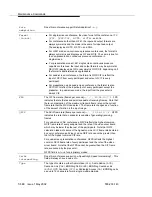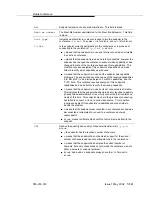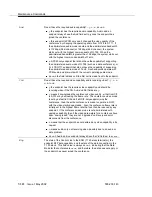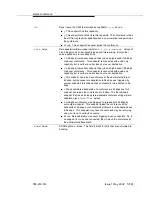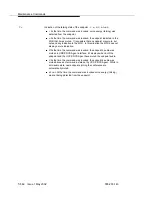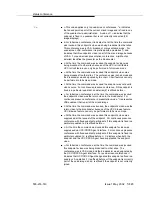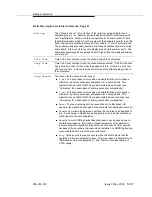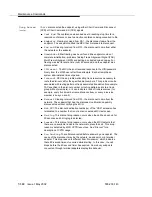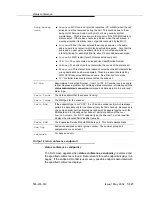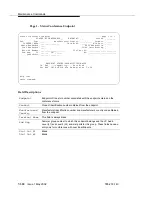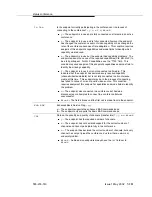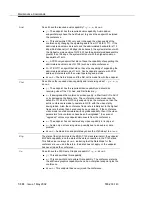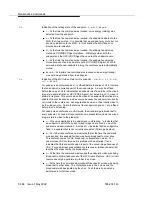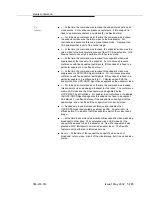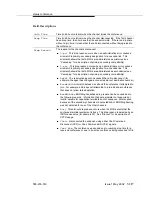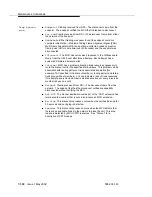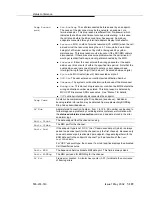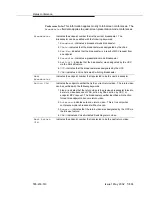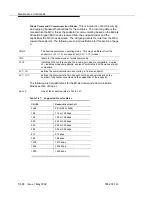
status conference
Issue 1 May 2002
7-317
555-233-143
Field Descriptions (status conference, Page 2)
Sum Grp
The VD audio Level 1 (L1) and Level 2 (L2) summer group parts for each
assigned group (1–4). Summer parts are assigned only for conferences with
over 6 participants. When a conference operates at an audio mode of 7 kHz
(administered audio mode is 7 kHz, or auto with the bandwidth greater than 128
kbps), the system allocates “primary” and “secondary” L1 and L2 summer parts.
These primary and secondary parts are allocated as adjacent port slots on the
same board. Status conference only displays the primary summer ports. The
secondary summer ports are always one slot higher than the displayed primary
summer port.
Join Time
Time (in 24-hour notation) when the channel joined the conference.
Drop Time
Time (in 24-hour notation) when the channel disconnected. If the first channel
has a drop time, then it means that the endpoint is idle. If there is a drop time
without a join time, it means that the call disconnected without being joined to
the conference.
Drop Reason
The reason for the channel’s disconnect:
■
2-pri
This drop reason occurs when an administration error causes a
mismatch in primary-secondary designation for a cascade link. This
mismatch shows that both MCUs are administered as primaries (see
“Cascading” for a description of primary-secondary compatibility).
■
2-sec
This drop reason occurs when an administration error causes a
mismatch in primary-secondary designation for a cascade link. This
mismatch shows that both MCUs are administered as secondaries (see
“Cascading” for a description of primary-secondary compatibility).
■
Agent
The reservation agent has caused the call to disconnect (for
example, the agent has changed a connected dial-out destination number).
■
Bandwidth
mismatch between a call and the conference it attempted to
join. For example, a 56-kbps call attempted to join a 64-kbps conference
that does not allow rate adaptation.
■
BondHshake
BONDing handshake drop reason can be caused due to
the following reasons: information channel parameter not supported or
invalid, parameter negotiation terminated out of sequence, timer expired
because of the secondary channels did not establish, or BONDing framing
was not detected for one of the other channels.
■
Busy
This dial-out drop reason occurs when the MCU detects that the
conferee’s terminal equipment is busy. This drop reason is detected by an
ISDN cause value (for example h0). See “Dial-out” for a description of
CPTR usage.
Summary of Contents for S8700 Series
Page 50: ...Maintenance Architecture 555 233 143 1 26 Issue 1 May 2002 ...
Page 74: ...Initialization and Recovery 555 233 143 3 12 Issue 1 May 2002 ...
Page 186: ...Alarms Errors and Troubleshooting 555 233 143 4 112 Issue 1 May 2002 ...
Page 232: ...Additional Maintenance Procedures 555 233 143 5 46 Issue 1 May 2002 ...
Page 635: ...status psa Issue 1 May 2002 7 379 555 233 143 status psa See status tti on page 7 406 ...
Page 722: ...Maintenance Commands 555 233 143 7 466 Issue 1 May 2002 ...


